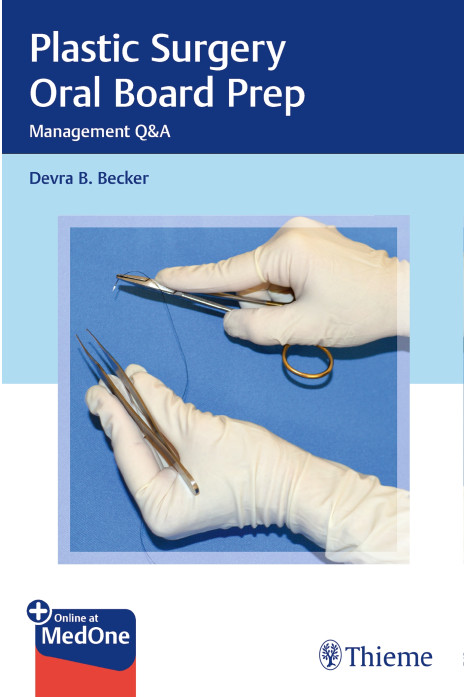A unique resource for passing the rigorous American Board of Plastic Surgery oral board exam
Passing the plastic surgery board examinations necessitates meeting extremely demanding criteria. Certification from the ABPS is the gold standard – a significant milestone requiring intensive study, passing the written exam, and the highly challenging two-day oral board component. Acing the plastic surgery boards means a plastic surgeon has already demonstrated a high level of training and education, essential elements for achieving optimal results and patient satisfaction.
Plastic Surgery Oral Board Exam: Management Q&A by Devra Becker restructures core plastic surgery knowledge into the conceptual framework needed for mastery of the plastic surgery oral board exam. It fills a gap in the literature, exploring levels of knowledge such as analysis, synthesis, and evaluation, as well as practical applications including fluid management, intraoperative and postoperative challenges, and ethical considerations. Questions and answers on key reconstructive, aesthetic, and elective procedures are encompassed throughout 22 chapters, enabling readers to synthesize knowledge and articulate it efficiently and effectively.
Key Highlights
- Nearly 400 Q&A mirror the type and sequencing of questions on the oral board exam
- Reconstruction topics include skin cancer, facial defects and trauma, back and trunk, traumatic hand injuries, lower extremity wounds, cleft lip and palate, and craniosynostosis syndromes
- Aesthetic and elective surgery chapters cover the aging face, breast, body and trunk, and hand
- Current recommendations for management of coexisting medical conditions such as thromboembolism prophylaxis and perioperative management of cardiac disease
This is an invaluable board study resource for plastic surgery residents and surgeons preparing for the oral board exam. Its comprehensive core curriculum content will also benefit clinicians prepping for in-service exams.
1 General Approach to the Oral Board Examination
2 Preoperative Assessment and Perioperative Management
3 Venous Thrombosis Prophylaxis
4 Postoperative Events: Fat Embolism and Compartment Syndrome
5 Free Flap Failure
6 Fluid Management
7 Ethical Considerations
8 Skin Cancer
9 Reconstruction of the Facial Defect
10 Aesthetic Surgery for the Aging Face
11 Facial Trauma
12 Breast Reconstruction
13 Elective Breast Surgery
14 Back and Trunk Reconstruction
15 Aesthetic Body and Trunk
16 Pressure Ulcers
17 Traumatic Hand Injury
18 Elective Hand Surgery
19 Lower Extremity Reconstruction
20 Lower Extremity Wounds
21 Cleft Lip and Palate
22 Craniosynostosis Syndromes
Appendix A: Practice Photos
Appendix B: Suggested Reconstructions













